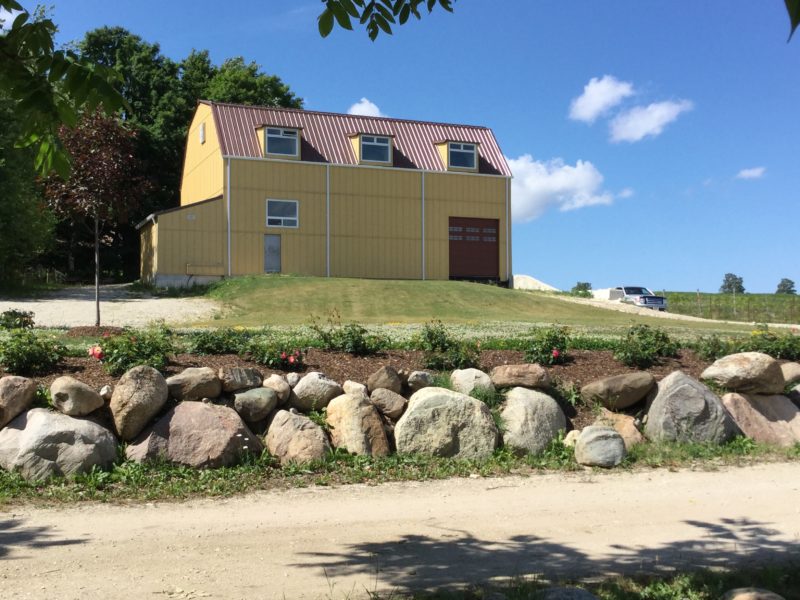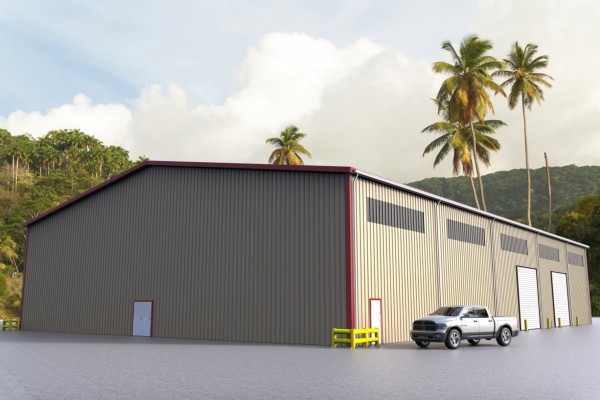When considering a new metal building, the cost of construction or purchase is not the only financial consideration. There are also additional maintenance costs, such as insurance. Whether for commercial or personal use, insurance is a necessary expense for your metal building. Fortunately, insurance rates for metal buildings tend to be cheaper than those of wood-framed structures.
How Are Insurance Rates Determined for Metal Buildings?
Two factors that help determine insurance rates for your building are the building materials and the amount of time your buildings can withstand fire.

For over 50 years, Insurance Services Office (ISO) has provided information on property and casualty insurance risk. The ISO Construction Classifications ranks buildings by six categories of fire resistance. Usually, your insurance rates are based on these classifications if your building is less than 15,000 square feet. If the size of your building exceeds 15,000 square feet, most insurance companies consider other factors such as total losses for the state, regional weather, and the value of your building. If you build a warehouse, for example, in a fire-prone region, insurance companies will usually factor this into your insurance rates.
ISO Construction Classifications
There are six classifications of fire resistance. Class 1 is the least fire-resistant, while class 6 is the most fire-resistant.
Class 1: Frame
The exterior walls of these buildings are noncombustible or slow-burning. However, the floors and roofs are combustible, or the walls and roofs are made with noncombustible and combustible materials.
Class 2: Joined Masonry
This class includes structures with exterior walls made of fire-resistant materials rated no less than one hour. A fire-resistance of one hour means that the materials can resist fire exposure for at least one hour. Class 2 buildings also include masonry structures with combustible floors and roofs.
Class 3: Noncombustible
This class includes buildings with noncombustible or slow-burning exterior walls, floors, and roofs. These buildings can also have metal supports that are noncombustible or slow-burning.
Class 4: Masonry Noncombustible
This class of buildings has exterior walls with a fire-resistance rating of at least one hour, and the masonry is at least four inches thick. The floors and roof are noncombustible or slow-burning.
Class 5: Modified Fire Resistive
In this class, the exterior walls, floors, and roof could be considered Class 6, but there are discrepancies in thickness. The fire-resistance rating is at least one hour but no more than two hours.
Class 6: Fire-Resistive
This class is the most fire-resistive. Solid masonry walls are at least four inches thick, and hollow masonry walls are at least 8 inches in thickness. The fire-resistance rating of the entire structure is at least two hours. In addition, the floors, roof, and metal support also have a fire-resistance rating of at least two hours. For added fire resistance, the structures also have pre-stressed or post-tensioned concrete units.
What ISO Class Should Your Metal Building Be?
According to the ISO, most steel buildings are considered Class 3. It is certainly possible to construct a more fire-resistant structure, but it may be more costly and impractical. Furthermore, the difference between insurance rates for Class 3 and higher classes isn’t substantial enough to justify the additional costs of construction, maintenance, and more.
Can You Lower Your Metal Building Insurance Rates?
Metal buildings are much more favorable for many insurance companies for various reasons. They are cheaper to assemble and rebuild, and they are resistant to fires, water damage, and high winds. A traditional wood building in a fire-prone region, for example, would take on more damage than a steel warehouse in the same area. Although the insurance rates for metal buildings are cheaper than those of wood buildings, you can lower your rates even further by adding additional fire-resistance measures such as a sprinkler system.
In closing, steel buildings are faster to assemble, and they have cheaper insurance rates than traditional wood-framed buildings. Both of these factors make metal buildings a more cost-effective investment in the long run. If you are ready to get started on your next metal building, contact Allied Steel Buildings today!

